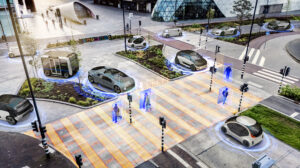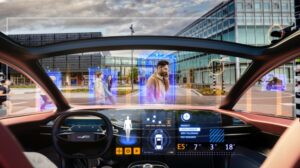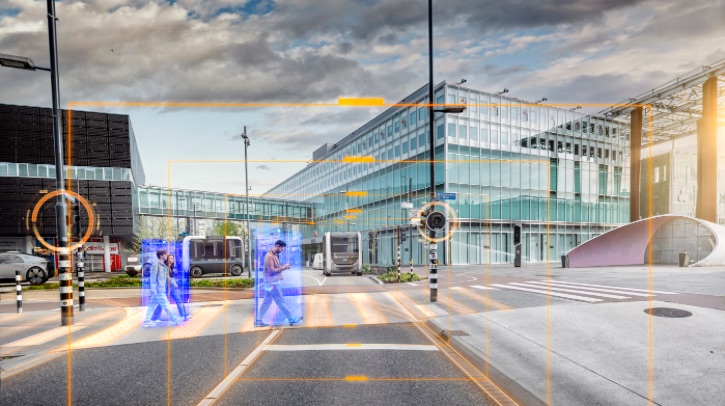*Sponsored Article
Henk Goossens, innovation partnerships manager, TNO, discusses the steps that have to be taken before self-driving cars can safely navigate the roads, ahead of TNO’s Meet the Expert sessions, which will delve deeper into the opportunities, developments and challenges currently facing the self-driving sector.
Are self-driving cars truly ready for the road?
Volvo once envisioned a world where self-driving cars would dominate the roads by 2010. However, more than a decade later, the reliance on human drivers continues. While advancements like adaptive cruise control and automatic braking have made driving easier and safer, the fully autonomous vehicle still feels out of reach. What progress has been made, and what steps are still needed before self-driving cars can safely navigate the roads? TNO continuously pushes the boundaries of inherently safe and responsible self-driving, an intriguing and multi-faceted challenge.
What does ‘safety’ actually mean?
Before we can assess if self-driving cars are safe, it’s important to first define what we mean by ‘safety’. TNO’s research is guided by two complementary models introduced by Professor Erik Hollnagel in 2015, known as Safety-I and Safety-II.
Let’s explore the concepts of Safety-I and Safety-II
Safety-I focuses on preventing errors and avoiding accidents, while Safety-II takes a broader view, focusing on making sure things go right in a wide range of conditions. This second perspective is key in developing autonomous vehicles, as it emphasizes the importance of ensuring that the vehicle can perform well across diverse driving scenarios.
Using these concepts, TNO defines safe driving as not only avoiding crashes (Safety-I) but also driving attentively, predictably, and according to what people would judge as good roadmanship (Safety-II).

Humans vs. machines: the learning gap
Translating human driving standards into AI systems is a major challenge. “An AI system learns to identify pedestrians based on visual data, but it doesn’t truly ‘understand’ what a pedestrian is in the way a human does,” explains Jan-Pieter Paardekooper from TNO. This raises concerns about how consistently the system will recognize and respond to pedestrians in all scenarios.
Similar issues arise with traffic rules. Paardekooper says, “Humans don’t always follow the rules exactly, but we understand the intent behind the traffic rules. AI can learn examples of behavior, but it lacks the ability to deduce the underlying principles, which makes unpredicted situations difficult for these systems to handle.” Humans have an inherent ability to adapt to new situations, something that AI struggles with. For example, if the road is uneven, we instinctively adjust our speed. Self-driving cars, on the other hand, follow pre-set programming and can’t adjust in real time to unexpected road conditions.
Addressing human error
Despite these challenges, autonomous systems have advantages. Self-driving cars won’t suffer from fatigue, distraction or impaired judgment, which are common causes of human error on the road. The goal is to develop a car that can drive better than a human on their best day. That’s why the bar needs to be set higher for self-driving cars than for human drivers. While humans only need to prove competence in everyday driving scenarios, autonomous systems must consistently handle a wide range of situations, even without the ability to learn from each one as a human driver would.
Defining competence in driving
So, how can we measure whether a self-driving car can navigate complex environments effectively? “A vehicle programmed to handle chaotic city traffic in Lima may not perform well in quieter streets in Utrecht, and vice versa,” explains Jeroen Hogema from TNO. TNO is collaborating with CBR (Centraal Bureau Rijvaardigheidsbewijzen – the Dutch driver licensing authority) and RDW (the Netherlands Vehicle Authority) to create a framework for evaluating competent driving across such different conditions.

Testing methods
To determine what competent driving looks like, TNO reviewed driving guidelines from multiple countries and observed real-world traffic behavior using drones. They also ran tests with human drivers under the supervision of examiners to establish benchmarks for competency. These findings are continuously refined and will eventually be applied to assess self-driving systems.
While significant progress has been made, autonomous driving technology still faces hurdles. A major step forward will involve creating systems that can both learn from experience and reason through new situations. This combination could be the key to achieving safe and reliable autonomous driving in the future.
Join the Meet the expert sessions
What progress has been made, and what steps are still needed before self-driving cars can safely navigate the roads? During our Meet the Expert sessions, we will delve deeper into the opportunities, developments and challenges we currently face regarding self-driving cars.
Discover more and sign up for the sessions
Contact Henk Goossens – innovation partnerships manager, TNO


